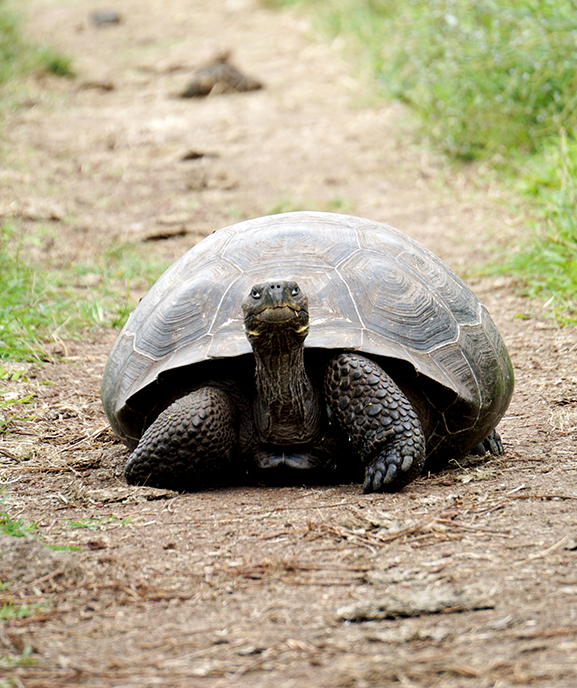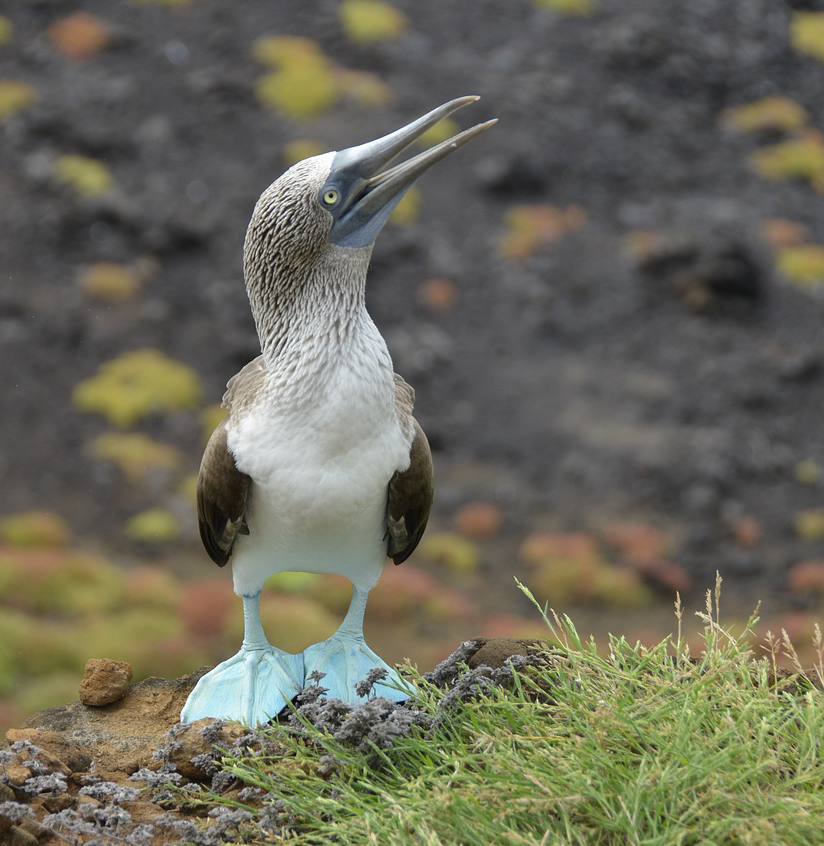Spectacular and isolated, Ecuador’s Galapagos Islands really do feel like another world
The Galapagos Islands are one of the most incredible island archipelagos in the world and an adventurer’s dream, offering wildlife and landscapes found nowhere else on earth.
Between 3 million and 5 million years ago, a series of volcanic eruptions formed the Galápagos archipelago and these islands are home to such a variety of unique sea life, birds, land animals and stunning views they can take the breath away from even the most seasoned of travellers.
Why are the Galapagos Islands special?
Existing virtually untouched for millions of years, the plants and animals who found their way there adapted and thrived. The archipelago became Ecuador’s first national park in 1959, and the Galápagos were named a UNESCO World Heritage Site in 1978.
Unfazed wildlife
A lack of natural predators left the Galapagos wildlife with no fear of humans, making the islands an absolutely magical place to visit. It is a truly unforgettable experience to walk among animals and birds that seem oblivious to your presence and just get on with what they do best.



How to get to the Galápagos Islands
Before swimming with the sea lions, checking out the distinct flora and fauna and marvelling at the dramatic volcanic activity that formed the islands, you’ve got some planning to do.
Part of Ecuador, and spread out across both sides of the Equator, the 19 islands and dozens of islets and rocks that dot a vast area of 45,000 square kilometres of ocean sit about 1,000 kilometres west of northern South America. Most of the islands in the Galápagos archipelago are uninhabited. Flights to the islands depart from Quito or Guayaquil on mainland Ecuador.

The Galápagos from land or sea?
Do you want to be based on one of the three inhabited islands, exploring other islands via day-trip boat rides? Or do you want to be based on a live-aboard boat that provides your accommodation and transport from island to island?
We see there three main points to consider when choosing between land and sea.
Cost: A Galápagos holiday is not a cheap one. If you want to do it as cheaply as you can, then go land based. There are a variety of hotels and restaurants on San Cristóbal Island, Santa Cruz Island, Isabela and Floreana islands. However, staying more cheaply does come at a cost: time. If you choose a land-based holiday, a lot of your time in the Galápagos will be spent getting from your hotel, onto a day-trip boat, out to the islands and then back to your hotel. Any visitor to the Galapagos National Park must be accompanied by an authorised guide.
Time: Travellers who opt for live-aboard boats, which come in a range of price points, sleep on the boats and they do most of the travelling from place to place during the night. This means you’ll wake up ready for a new adventure in a new place each day. Most live-aboard boats offer five- to eight-day cruises and are limited to a maximum of 100 passengers, but carry substantially fewer people than that.
Routes are set by Galápagos National Park officials in an effort to mitigate crowding and environmental stress. Cruises offer a northern itinerary or a southern itinerary (sometimes called eastern and western itineraries), alternating weekly.
Access: Because the day-boats are only able to get to the five islands that can be reached in one day, land-based-travellers will never be able to visit the more distant islands that live aboard boat visitors can.
Our conclusion: Unless you suffer from hideous seasickness, or you really hate the idea of being on a boat for a week, book a cruise. You’ll waste less time, and you’ll see as much of the Galápagos Islands as possible.
When to go to the Galápagos?
There is no bad time to visit the Galápagos Islands; they are a year-round destination. Their location near the equator means warm temperatures and extraordinary animals at any time of the year.
The best time to go to the Galapagos will depend on what you hope to see and do there. January to June offers great snorkelling due to calmer seas and warmer ocean temperatures, while the cool, dry season from July to December tends to be better for hiking along the coast and through the highlands. The colder temperatures mean cooler water currents – you may need a wet suit while snorkelling – but the colder water brings in huge quantities of plankton and hungry marine life.
So, if you’re set on seeing a particular bird or sea mammal, you may need to pick the month and the itinerary that will give you the best chance of spotting them. Some species are seasonal, and many exist on specific islands. For example, the Galápagos albatross just shows up for mating in the spring and summer. To see tiny penguins migrating from Bartolome Island to Isabela and Fernandina you’ll need to be there in February. If you want to see blue-footed boobies dancing a mating jig, go in May. To watch sea lion pups being born, visit in October.



Planning pays
The best way to plan your trip is to do it well in advance. More than 200,000 travellers flock to the islands each year, and that number is growing. Last-minute deals are sometimes available for those travellers who have the time to spend a few days searching for sales after they arrive. However, diving tours are one of the most popular and activities in the Galapagos Islands and the dive boats tend to fill up fast because there are so few of them.
But of course, the most effective way to create an exceptional journey is with the help of a holiday expert.
Talk to us about this unique destination, and we’ll get your trip sorted out plenty of time ahead. Trust us, your experience will be all the richer for it.
Galapagos weather:
There are 2 distinct seasons in Galapagos:
Hot Season: December until May – temperatures are humid and range between 26ºC – 30ºC while the water temperature averages around 26ºC.
Dry Season: From July to November the weather is cloudier, cooler and drier, with air temperatures ranging from 23ºC – 26ºC and water temperatures sitting between 20ºC – 23ºC.
Do I need a visa to travel to Galapagos Islands?
Most travellers do not need a visa to visit the Galapagos Islands. If you have an Australian, New Zealand, Canadian or American passport you can spend up to 90 days exploring the islands without a visa. However, make sure your passport is valid for at least six months past your travel plans. About 97% of the Galapagos Islands are a national park, and there are some important rules that visitors are expected to follow.
And money ….
The official currency of Ecuador is the U.S. dollar and cash is king; credit cards are not widely accepted and ATMs have a reputation for being unreliable. Make sure to have plenty of small bills as many places won’t accept anything larger than a $50, taxis rarely cost most than $5 and you’ll want plenty of $1 bills for tips.
Is tipping customary in the Galapagos Islands?
While not mandatory, tips are very much appreciated by service workers and guides. Leaving a 10% tip is customary in restaurants. Some automatically add a 10% service charge to your bill, in which case an extra tip isn’t required.
What is Internet access like in the Galapagos Islands?
There are reliable internet cafes in Puerto Ayora (Santa Cruz Island) and Puerto Baquerizo (San Cristobal Island). Some hotels and restaurants on other islands will have a Wi-Fi connection, but it is best not to rely on it.
What are the toilets like in the Galapagos Islands?
Most towns have flushable toilets, though you will likely encounter squat toilets as well. Soap and toilet paper frequently run out or just aren’t provided in public bathrooms – carry your own to avoid a tricky situation.
Can I drink the water?
Tap water isn’t considered safe to drink in the Galapagos Islands. Avoid drinks with ice and make sure to peel fruit before eating it. Help the environment and try to avoid buying bottled water. Instead, fill a reusable water bottle with filtered water. A good idea is to pack purification tablets, so you can filter your own water instead of searching for it on the islands.
The essential packing list ......
- Lots of water-resistant and high-SPF sunscreen, sunglasses and a wide-brimmed hat. Galápagos land excursions are completely exposed to the sun.
- A rash shirt to wear while snorkelling and kayaking.
- While you’ll be comfortable in t-shirts and shorts at any time of the year, long, loose clothes offer better protection from the sun and keep you cooler. For mornings and evenings during the cooler season, you’ll need a light jacket or warm jumper as temperatures can feel colder due to the cool sea current.
- Make sure you’ve got good closed-toe walking shoes for hiking and sandals or jandals to wear in towns and onboard boats.
- Leave the heels at home, especially if you’ve booked a boat-based itinerary.
What NOT to bring to the Galápagos
Like New Zealand, the introduction of non-native plant species is a major environmental threat to the Galápagos Islands. Do not bring any fruit, vegetables, or plants of any kind with you and check your shoes and any outdoor gear or camping equipment; you’ll need to sign an affidavit to the effect.
Need help planning your trip? Get in touch with our experts
Ultimately, deciding on the best time to visit the Galapagos really depends on you, what you’d like to see, and what activities you’d like to do. So speak to your personal travel manager at Bucket List Travel and we’ll organise your magical trip to the Galapagos Islands.

